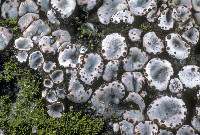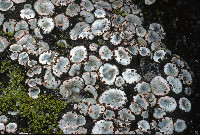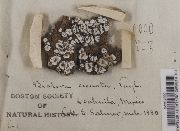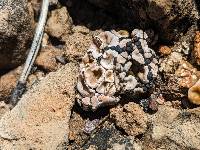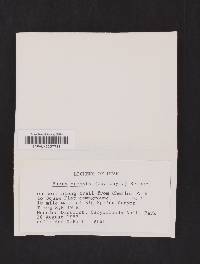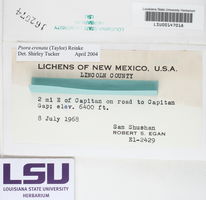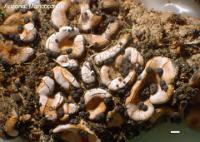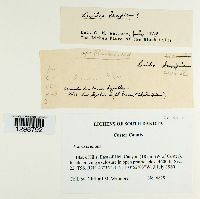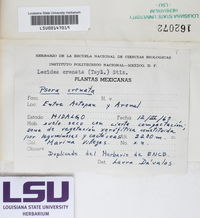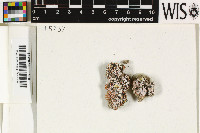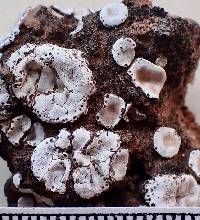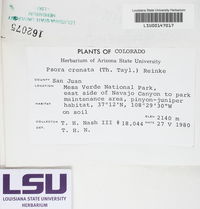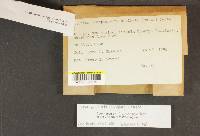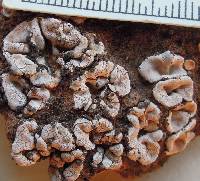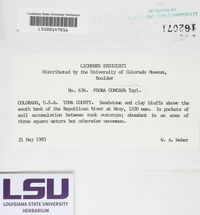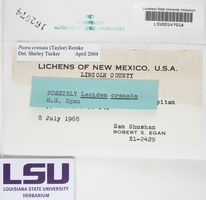
Consortium of Lichen Herbaria
- building a Global Consortium of Bryophytes and Lichens as keystones of cryptobiotic communities -
- Home
- Search
- Images
- Species Checklists
- US States: O-Z >
- US National Parks
- Central America
- South America
- US National Parks
- Southern Subpolar Region
|
|
|
|
Family: Psoraceae
[Biatora crenata (Taylor) Tuck., moreEndocarpon crenatum Taylor, Lecidea coroniformis Kremp., Lecidea crenata (Taylor) Stizenb., Lecidea crenata var. coroniformis (Kremp.) Zahlbr., Lecidea crenata var. crenata (DC.) Steud., Lecidea crenata var. speirea (Taylor) Zahlbr., Phyllopsora coroniformis (Kremp.) Zahlbr., Psora elegans Müll.Arg.] |
Nash, T.H., Ryan, B.D., Gries, C., Bungartz, F., (eds.) 2002. Lichen Flora of the Greater Sonoran Desert Region. Vol 1. Squamules: up to 10 mm wide, rounded, adnate and dispersed to adjacent or imbricate, usually weakly to strongly concave upper surface: orange to bright red or pink, more rarely reddish brown, dull, partly to entirely pruinose, sparingly fissured margin: concolorous with upper side or white, down-turned or more rarely straight, more or less entire upper cortex: up to 80-140 µm thick, composed of thin-walled hyphae with round lumina, containing crystals of calcium oxalate but no lichen substances medulla: containing crystals of lichen substances and calcium oxalate lower cortex: absent or poorly developed lower surface: white to pale brown Apothecia: up to 2 mm diam., marginal, immarginate even when young, black, epruinose or white pruinose ascospores: ellipsoid, 12-16 x 6-8 µm Pycnidia: unknown Spot tests: upper cortex K-, C-, KC-, P-; medulla K+ red, C-, KC-, P+ orange Secondary metabolite: norstictic acid. Substrate and ecology: on soil in open habitats, from deserts to juniper-pinyon pine woodlands, up to 1840 m World distribution: southern Africa, Australia and North America Sonoran distribution: fairly common in Arizona, California, Baja California, Baja California Sur, Chihuahua, Sinaloa and Sonora. |
|
|
|
Powered by Symbiota




